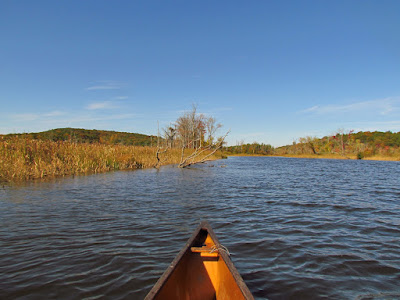The nice days have been windy as hell and the calm days have been 40 degrees and raining. For too long the weather has kept me off of the water.
I put in at the bottom of the East River, a favorite and well worthy of the first canoe trip in far too long. It is, as well, always a safe bet - a bit of river that never disappoints.
I meet two hunters returning just as I get ready to set out. They shot two Buffleheads and a Black Duck from a spot about a 1/2 mile upriver. They tell me the Buffleheads are just okay eating. Black Duck's are almost the same as a Mallard, so I knew that would be a good meal.
Yesterday, we had a minor ice storm and most everything is coated with a thin layer of ice. We can get some heavy ice storms, fortunately this one just makes everything glitter, if you ignore the fact that you have to scrape your way into your car. Today, the sky is blue and sunny, the wind is light, and the temperature hovers around freezing.
The tide is just past low, so I head up the East River and avoid my secret side routes that require more water for passage. I push a baker's dozen of Buffleheads up as far as the railroad before they fly up and head back from where we came. Of note, there are no shore birds. I usually see some Yellow Legs.
 |
| a side channel in the Big Bends |
I surprise a white tail deer at Cedar Island. I cna't tell if it is a large doe or a buck that has shed its antlers. It takes a few quick steps into the trees and then stops to watch me pass.
Just passed Beebe's dock I flush several Buffleheads and a pair of Hooded Mergansers. But things really get busy up at the Big Bends. By the time I've paddled through the three big 90 degree bends I've seen 60-75 Black Ducks.
While I pause on the upstream side of the arch bridge, a Great Blue Heron flies low over me and lands on the far bank. I'm sure that I was out of view and the Heron didn't see me until it landed. It gave me a brief going over and then flew off.
I head back from here. The weather prediction is for wind gusts in the afternoon and at this tide level I can only get another few hundred yards up to the Duck Hole Farms without wading.
There's no flood current until I'm just two bends from the car. It seems that I've been paddling pretty much on the top of the tide lag since I set out with no help in either direction. I'm a bit surprised at the strength of the current and how quickly the water went from slack to flood.



















































